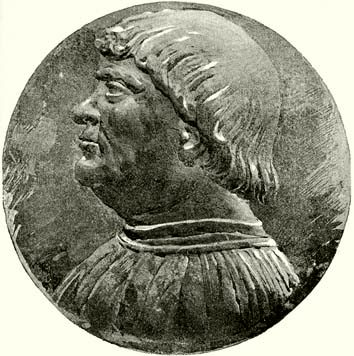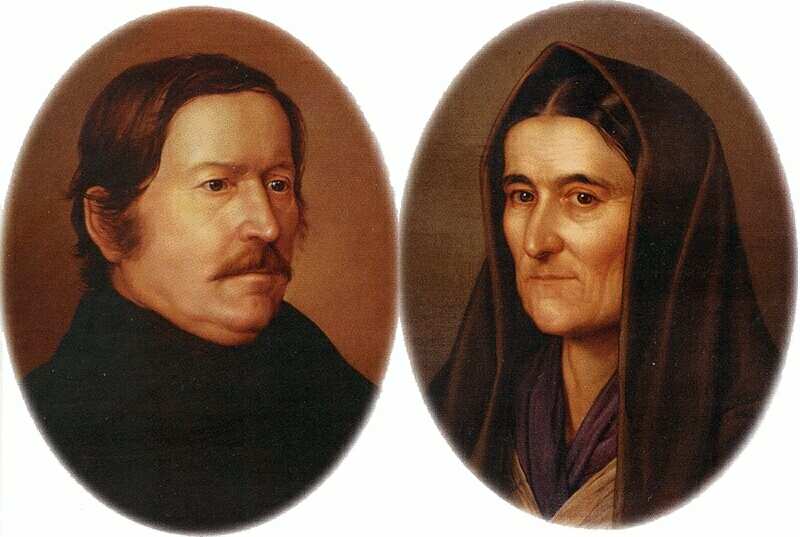|
Erdeed
Ardud ( hu, Erdőd, Hungarian pronunciation: ; german: Erdeed) is a town situated in Satu Mare County, Transylvania, Romania. It administers five villages: Ardud-Vii (), Baba Novac (), Gerăușa (), Mădăras () and Sărătura (). History It has a complex history, having in different periods been part the Kingdom of Hungary, Ottoman Empire, Habsburg monarchy and the Kingdom of Romania. In 1920 the town became part of Romania, under the Treaty of Trianon that concluded World War I. As a result of the Second Vienna Award it became a part of Kingdom of Hungary (1920–1946), Hungary between 1940 and 1945. Since then it has been part of Romania. Demographics The 2011 census recorded a total population of 5,889. Of these, 59.2% were Romanians, 18.6% Hungarians, 16.1% Roma in Romania, Roma and 4.8% Germans. In 2002, 41.7% were Romanian Orthodox, 32.7% Roman Catholic, 13.9% Romanian Church United with Rome, Greek-Catholic, Greek-Catholic, 5.1% Pentecostal Union of Romania, Pentecostal ... [...More Info...] [...Related Items...] OR: [Wikipedia] [Google] [Baidu] |
Satu Mare County
Satu Mare County ( ro, Județul Satu Mare, ) is a county (Counties of Romania, județ) of Romania, on the border with Hungary and Ukraine. The capital city is Satu Mare. Name In Hungarian language, Hungarian, it is known as ''Szatmár megye'', in German language, German as ''Kreis Sathmar'', in Ukrainian language, Ukrainian as Сату-Маре, and in Slovak language, Slovak as ''Satmárska župa''. Demographics Satu Mare is a multicultural city, with a population mix of Romanian, Hungarian, Roma, German, and other ethnicities. In 2002, Satu Mare County had a population of 367,281 and the population density was .National Institute of Statistics, "Populația după etnie"'' * Romanians – 58.8% * Hungarians in Romania, Hungarians – 35.2% * Romani people, Roma – 3.7% * Germans (Satu Mare Swabians, Sathmar Swabians) – 1.7% * Ukrainians, Slovaks, other In 2011, its population was 329,079 and population density was . * Romanians – 57.73% * Hungarians – 34.5% * Romani p ... [...More Info...] [...Related Items...] OR: [Wikipedia] [Google] [Baidu] |
Romanian Church United With Rome, Greek-Catholic
The Romanian Greek Catholic Church or Romanian Church United with Rome, Greek-Catholic ( la, Ecclesia Graeco-Catholica Romaniae; ro, Biserica Română Unită cu Roma, Greco-Catolică), sometimes called, in reference to its Byzantine Rite, the Romanian Byzantine Catholic Church is a ''sui iuris'' Eastern Catholic Church, in full union with the Catholic Church. It has the rank of a Major Archiepiscopal Church and it uses the Byzantine liturgical rite in the Romanian language. It is part of the Major Archiepiscopal Churches of the Catholic Church that are not distinguished with a patriarchal title. Cardinal Lucian Mureșan, Archbishop of Făgăraș and Alba Iulia, has served as the head of the Romanian Greek-Catholic Church since 1994. On December 16, 2005, as the ''Romanian Church United with Rome'', the Greek-Catholic church was elevated to the rank of a Major Archiepiscopal Church by Pope Benedict XVI, with Lucian Mureșan becoming its first major archbishop. Mureşan was e ... [...More Info...] [...Related Items...] OR: [Wikipedia] [Google] [Baidu] |
Napkor
Napkor is a village in Szabolcs-Szatmár-Bereg county, in the Northern Great Plain region of eastern Hungary. Geography It covers an area of and has a population Population typically refers to the number of people in a single area, whether it be a city or town, region, country, continent, or the world. Governments typically quantify the size of the resident population within their jurisdiction using a ... of 3664 people (2015). References Populated places in Szabolcs-Szatmár-Bereg County {{Szabolcs-geo-stub ... [...More Info...] [...Related Items...] OR: [Wikipedia] [Google] [Baidu] |
Szakoly
Szakoly is a village in Szabolcs-Szatmár-Bereg county, in the Northern Great Plain region of eastern Hungary. It is 135 miles (217 km) to the east of Budapest and 21 miles (33 km) to the north east of Debrecen. It is home to the Szakoly Power Plant. Szakoly was first mentioned in 1290. Geography It covers an area of and has a population of 2952 people (2004). There is a lake on the southern border of the settlement. Average annual precipitation is about 560–590 mm, and the annual average temperature is between 9.5 to 9.6 °C (49.1 to 49.3 °F). History Szakoly was first mentioned in 1290. Inhabited area as early as the Avars age was built by B.C. II.-I. century. This is evidenced by several archaeological finds. During the reign of King of Bela III. of Hungary, it was a hospital in Szakoly. Here was a county assembly in 1320. It were owned by the Zakoly family in 1487, hence the name of the settlement known today. The Turks almost completely destroyed the ... [...More Info...] [...Related Items...] OR: [Wikipedia] [Google] [Baidu] |
La Martyre
La Martyre (; ''Ar Merzer in Breton'') is a commune in the Finistère department of Brittany in northwestern France. Population Inhabitants of La Martyre are called in French ''Martyriens''. Sights The village of La Martyre has one of the oldest parish palisades ( fr), whose construction was undertaken between the 11th and 17th centuries. History The village owes its name to the assassination on 25 June 874 of King Salomon of Brittany, who had sought refuge in the village church. The church was called "la Martyre" (''Ar Merzher'', ''the Martyr'') after its desecration, and the name was taken up by the village. As for the king, he was canonised in 910 for his martyrdom and his virtues. In the Middle Ages, a prestigious tulle fair took place in La Martyre. In the 15th and 16th centuries this fair saw the most activity. Legend has it that the father of William Shakespeare used to frequent these fairs, which no longer take place. See also *Communes of the Finistère department *L ... [...More Info...] [...Related Items...] OR: [Wikipedia] [Google] [Baidu] |
Town Twinning
A sister city or a twin town relationship is a form of legal or social agreement between two geographically and politically distinct localities for the purpose of promoting cultural and commercial ties. While there are early examples of international links between municipalities akin to what are known as sister cities or twin towns today dating back to the 9th century, the modern concept was first established and adopted worldwide during World War II. Origins of the modern concept The modern concept of town twinning has its roots in the Second World War. More specifically, it was inspired by the bombing of Coventry on 14 November 1940, known as the Coventry Blitz. First conceived by the then Mayor of Coventry, Alfred Robert Grindlay, culminating in his renowned telegram to the people of Stalingrad (now Volgograd) in 1942, the idea emerged as a way of establishing solidarity links between cities in allied countries that went through similar devastating events. The comradeship ... [...More Info...] [...Related Items...] OR: [Wikipedia] [Google] [Baidu] |
Tamás Bakócz
Tamás Bakócz (1442, in Erdőd15 June 1521, in Esztergom) was a Hungarian archbishop, cardinal and statesman. He was the son of a wagoner and was adopted by his uncle, who trained him for the priesthood and whom he succeeded as rector of Tétel (1480). He studied in Breslau and Padua. Shortly afterwards he became one of the secretaries of King Matthias Corvinus, who made him bishop of Győr and a member of the royal council (1490). Under Vladislaus II of Bohemia and Hungary (1490–1516) he became successively bishop of Eger, the richest of the Hungarian sees, archbishop of Esztergom (1497), cardinal (1500), and titular Latin Patriarch of Constantinople (1510). From 1490 to his death in 1521 he was the leading statesman of Hungary and mainly responsible for foreign policy. It was solely through his efforts that Hungary did not accede to the league of Cambrai, was consistently friendly with Venice, and formed a family compact with the Habsburgs. He was also the only Magya ... [...More Info...] [...Related Items...] OR: [Wikipedia] [Google] [Baidu] |
Cardinal (Catholicism)
A cardinal ( la, Sanctae Romanae Ecclesiae cardinalis, literally 'cardinal of the Holy Roman Church') is a senior member of the clergy of the Catholic Church. Cardinals are created by the ruling pope and typically hold the title for life. Collectively, they constitute the College of Cardinals. Their most solemn responsibility is to elect a new pope in a conclave, almost always from among themselves (with a few historical exceptions), when the Holy See is vacant. During the period between a pope's death or resignation and the election of his successor, the day-to-day governance of the Holy See is in the hands of the College of Cardinals. The right to participate in a conclave is limited to cardinals who have not reached the age of 80 years by the day the vacancy occurs. In addition, cardinals collectively participate in papal consistories (which generally take place annually), in which matters of importance to the Church are considered and new cardinals may be created. Cardina ... [...More Info...] [...Related Items...] OR: [Wikipedia] [Google] [Baidu] |
Hungarian People
Hungarians, also known as Magyars ( ; hu, magyarok ), are a nation and ethnic group native to Hungary () and Kingdom of Hungary, historical Hungarian lands who share a common Hungarian culture, culture, Hungarian history, history, Magyar tribes, ancestry, and Hungarian language, language. The Hungarian language belongs to the Uralic languages, Uralic language family. There are an estimated 15 million ethnic Hungarians and their descendants worldwide, of whom 9.6 million live in today's Hungary. About 2–3 million Hungarians live in areas that were part of the Kingdom of Hungary before the Treaty of Trianon in 1920 and are now parts of Hungary's seven neighbouring countries, Hungarians in Slovakia, Slovakia, Hungarians in Ukraine, Ukraine, Hungarians in Romania, Romania, Hungarians in Serbia, Serbia, Hungarians of Croatia, Croatia, Prekmurje, Slovenia, and Hungarians in Austria, Austria. Hungarian diaspora, Significant groups of people with Hungarian ancestry live in various oth ... [...More Info...] [...Related Items...] OR: [Wikipedia] [Google] [Baidu] |
Júlia Szendrey
Júlia Szendrey (29 December 1828 – 6 September 1868) was a Hungarian poet, writer and translator, most known as the wife of celebrated Hungarian poet Sándor Petőfi. Life and works Júlia Szendrey was born in Újmajor, Keszthely, her father was Ignác Szendrey (1800–1895), a farm overseer for various noble families during his career, including the Festetics family and the Károlyi family. Her mother was Anna Gálovics. She spent four years studying in Pest at an institute for daughters of affluent families. She was fluent in foreign languages, played the piano and liked dancing, however, she was not fond of parties and showing her skills to others. She was happiest reading poems and books, of Heinrich Heine, George Sand and the like. As she was an educated lady, fond of literature and poetry, she immediately fell in love with Sándor Petőfi, when they met in Nagykároly in 1846. Despite opposition from her family, the couple got married a year later in Erdőd. As the Hu ... [...More Info...] [...Related Items...] OR: [Wikipedia] [Google] [Baidu] |
Sándor Petőfi
Sándor Petőfi ( []; né Petrovics; sk, Alexander Petrovič; sr, Александар Петровић; 1 January 1823 – most likely 31 July 1849) was a Hungarian poet of Serbian origin and liberal revolutionary. He is considered Hungary's national poet, and was one of the key figures of the Hungarian Revolution of 1848. He is the author of the ''Nemzeti dal'' (National Song), which is said to have inspired the revolution in the Kingdom of Hungary that grew into a war for independence from the Austrian Empire. It is most likely that he died in the Battle of Segesvár, one of the last battles of the war. Early life Petőfi was born on the New Year's morning of 1823, in the town of Kiskőrös, Kingdom of Hungary. The population of Kiskőrös was predominantly of Slovak origin as a consequence of the Habsburgs' reconstruction policy designed to settle, where possible, non-Hungarians in areas devastated during the Turkish wars. His birth certificate, in Latin, gives his name as ... [...More Info...] [...Related Items...] OR: [Wikipedia] [Google] [Baidu] |


.jpg)

